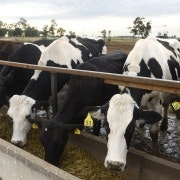Port Pirie revamp a recipe for success
The federal government's automobile industry assistance packages and the "co-investment" packages that never secure the future of the industry have been controversial. A different kind of government assistance for industry agreed in principle appears less contentious and far more creative.
The problem with the auto industry packages is that, despite the vast amounts of taxpayer funds expended, they haven't secured the future of the industry beyond a year or two and haven't result in a change to the structure of the remaining industry that provides any confidence of a viable future.
The federal and South Australian government's involvement in saving the Port Pirie smelter, and probably the town, appears at face value to be more imaginative and more likely to create something viable and better rather than throwing good money after bad to simply defer what appears inevitable.
The fate of Port Pirie's 120-year-old lead smelter, its 750 employees and the 2000 people who are dependent on it for their livelihoods has been in the balance for some years because of its poor profitability.
The smelter is owned by Nyrstar, a Belgium-based group formed from the merger of Umicore – formerly Union Miniere – and the global smelting assets of Zinifex – the renamed Pasminco – in 2006.
Had it closed there would have been significant remediation issues and costs – the smelter and the lead contamination threat it poses for its community has been a source of significant controversy and concern – as well as the broader economic consequences.
The deal announced on Monday appears to be a creative response to the financial issues confronting the smelter while in the process offering a pathway to better environmental outcomes.
At its core it involves spending $350 million to transform the smelter into a far more sophisticated (and cleaner) poly-metallic processing and recovery facility.
Where previously Nyrstar would have shipped lead and zinc concentrate containing traces of other metals off to China to be processed and the benefit of those additional higher-margin metals would have accrued to that processor, the new facility will enable Nyrstar to capture the full value of the feed it processes, which will include zinc from its Tasmanian smelter and could ultimately include metals from its other smelters around the world if the economics suit.
In effect, the plan will add value to the Port Pirie facility's output, lower its costs and produce cleaner outcomes from a modern plant.
The investment required – $350 million – was, however, a massive commitment from a company with a market capitalisation of just under $900 million, which is why it sought some form of government involvement. That assistance, indeed the entire funding package, has been quite cleverly constructed.
Nyrstar itself will invest $100 million directly. It also plans to forward sell about $100 million of the incremental metal, primarily silver, the new facility will produce, probably to a hedge funds or metal trader. The final piece of the funding structure is a structured investment that will be sold to third party investors, probably institutional, supported by a guarantee from the Australian Export Finance and Insurance Corporation.
It is the last piece of the funding that could pose a risk for taxpayers.
The planned investment, however, will only proceed after Nyrstar completes its financial feasibility study and makes a final investment decision on the basis of expected commercial viability. The transformation of the smelter is at this stage expected to produce a strongly profitable project. Nyrstar also has to put the forward sales agreement and third party investment in place.
The EFIC guarantee will help attract the third party investment, which will in turn provide considerable comfort that the guarantee would be unlikely to be called on – there would be $100 million of Nyrstar's funds and $100 million from the pre-sales (and the benefit of the $150 million of third party money) that would have to be wiped out before the guarantee was called.
The South Australian government is contributing by providing regulatory certainty in relation to the environment and health liabilities as well as $5 million to respond to the environmental issues, mainly lead dust emitted by the smelter. Nyrstar will spend $3 million a year for 10 years to improve environmental outcomes.
Facilitating the conversion of a marginal and very dirty lead smelter into a modern and far cleaner facility that adds value to both its own product and that produced by the Tasmanian smelter is a form of industry restructuring and transformation that has lower risks and potentially higher community returns than, as has occurred in the local auto industry, trying to prolong the life of industry models that are increasingly unsustainable in anything resembling their current form.
















